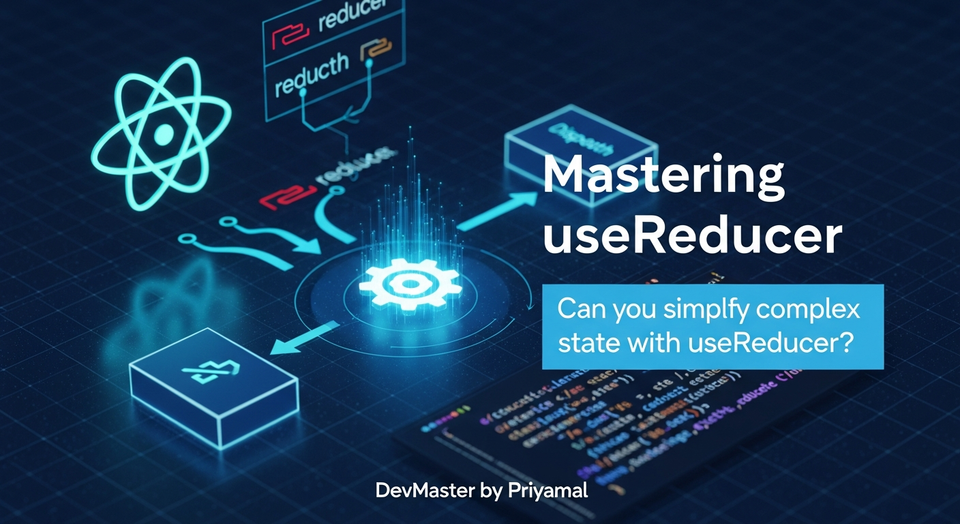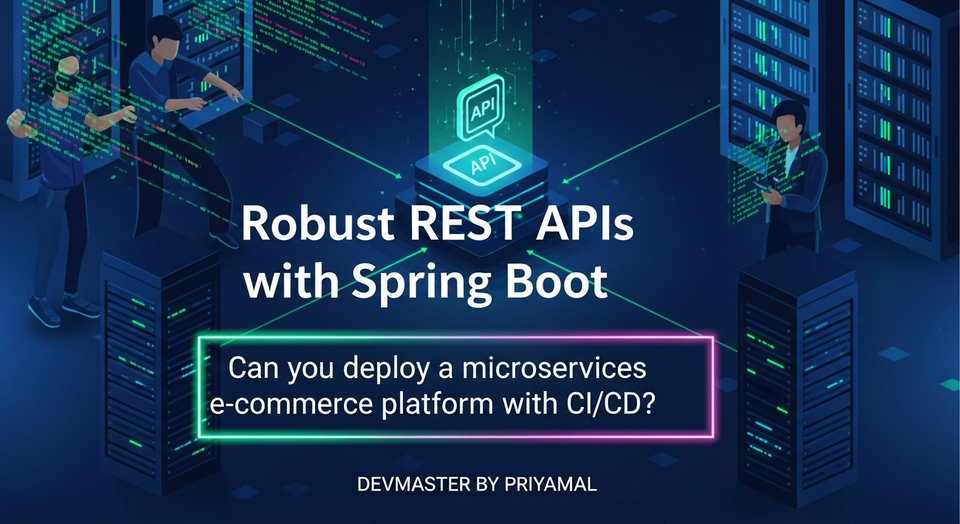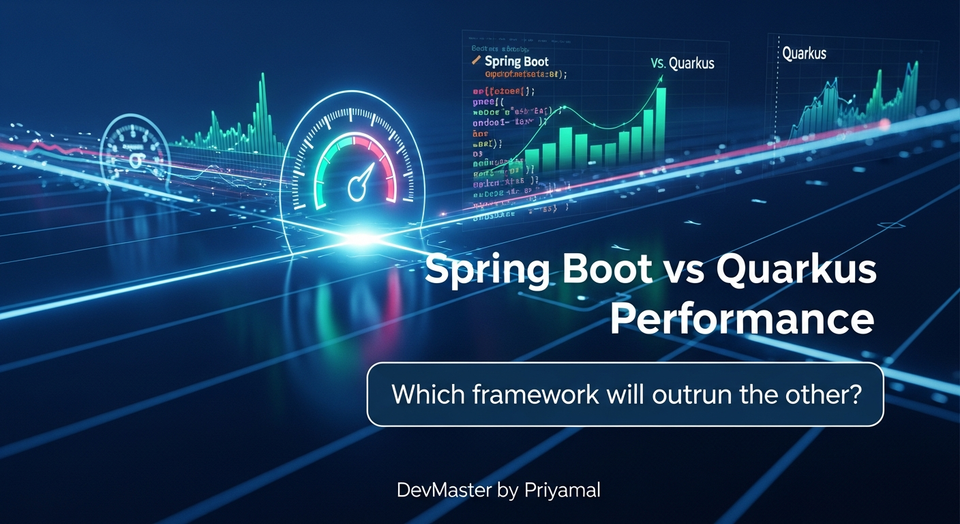Spring Boot Production Readiness Sinhala Guide | Expert Review & Optimization Tips

Spring Boot Production Readiness: An Expert Review & Optimization Sinhala Guide
ආයුබෝවන් යාළුවනේ! අද අපි කතා කරන්න යන්නේ ඔයාලා Spring Boot භාවිතයෙන් හදන Application එකක් 'production-ready' කරන හැටි ගැන. අපි හැමෝම code කරනවා, feature add කරනවා, ඒත් අපේ application එක production environment එකකට දාන්න කලින් හොඳට optimize කරලා, review කරලා තියෙන්න ඕනේ. ඒ කියන්නේ, ඒක user-friendly, secure, efficient, සහ maintainable වෙන්න ඕනේ. මේ guide එක ඔයාලට ඒ සඳහා අවශ්ය සියලුම දැනුම ලබා දෙන්න සූදානම්!
ඇයි මේක මෙච්චර වැදගත් වෙන්නේ? හිතන්න ඔයාලා හදපු application එකක් හදිස්සියේ down වුණොත්, නැත්නම් performance මදි වුණොත්, නැත්නම් security risk එකක් ආවොත්? ඒක ඔයාලගේ business එකට වගේම ඔයාලගේ reputation එකටත් ලොකු බලපෑමක් කරනවා. ඉතින්, මේ ගැටළු මඟහරවා ගන්න අපි අද කතා කරන මේ production readiness steps ගොඩක් වැදගත්.
අපි මේ tutorial එකෙන්, existing Spring Boot project එකක් review කරලා, ඒක production-ready කරන්න පුළුවන් optimization tips කිහිපයක් ගැන පියවරෙන් පියවර බලමු. අපි code, configuration වගේම best practices ගැනත් කතා කරමු. එහෙනම්, අපි පටන් ගමු!
1. Performance Optimization: ඔබේ Application එක වේගවත් කරමු!
Production environment එකකදී performance කියන්නේ ගොඩක් වැදගත් දෙයක්. Slow response times කියන්නේ usersලා අතරේ අප්රසාදයට ලක්වෙනවා කියන එකයි. ඒ නිසා, අපේ Spring Boot application එකේ වේගය වැඩි දියුණු කරගන්න පුළුවන් ප්රධාන ක්රම කිහිපයක් බලමු.
1.1. Database Connection Pooling
අපි database එකකට connect වෙන හැම වෙලාවෙම අලුත් connection එකක් open කරනවා කියන්නේ time consuming වැඩක්. මේකට විසඳුම තමයි connection pooling. Spring Boot එකේ default connection pool එක විදිහට HikariCP එනවා. මේක ඉතාමත් වේගවත් සහ efficient connection pool එකක්. මේක නිවැරදිව configure කිරීමෙන් database operations වල performance එක ගොඩක් වැඩි කරගන්න පුළුවන්.
උදාහරණයක් විදිහට, application.properties හෝ application.yml ෆයිල් එකේ මේ විදිහට configure කරන්න පුළුවන්:
# application.yml
spring:
datasource:
url: jdbc:mysql://localhost:3306/mydb
username: root
password: password
hikari:
maximum-pool-size: 10 # Maximum number of connections in the pool
minimum-idle: 5 # Minimum number of idle connections
connection-timeout: 30000 # Maximum number of milliseconds that a client will wait for a connection
idle-timeout: 600000 # Maximum amount of time a connection can sit idle in the pool
max-lifetime: 1800000 # Maximum lifetime of a connection in the pool
මෙහිදී maximum-pool-size, minimum-idle වගේ settings හරියට adjust කරගන්න එක වැදගත්. මේවා ඔයාලගේ application එකේ workload එක අනුව වෙනස් වෙන්න පුළුවන්.
1.2. Caching Implementations
නිතරම access කරන data cache කිරීමෙන් database access අඩු කරගෙන application එකේ response time එක වැඩි දියුණු කරගන්න පුළුවන්. Spring Boot එකේ Spring Cache Abstraction එක support කරනවා. Ehcache, Redis, Caffeine වගේ cache providers එක්ක integrate කරන්න පුළුවන්.
මුලින්ම @EnableCaching annotation එක main application class එකට add කරන්න:
import org.springframework.boot.SpringApplication;
import org.springframework.boot.autoconfigure.SpringBootApplication;
import org.springframework.cache.annotation.EnableCaching;
@SpringBootApplication
@EnableCaching
public class MyApplication {
public static void main(String[] args) {
SpringApplication.run(MyApplication.class, args);
}
}
ඊළඟට, service method වලට @Cacheable, @CachePut, @CacheEvict වගේ annotations use කරන්න පුළුවන්:
import org.springframework.cache.annotation.Cacheable;
import org.springframework.stereotype.Service;
@Service
public class ProductService {
// ... repository injection
@Cacheable("products")
public Product getProductById(Long id) {
System.out.println("Fetching product from database: " + id); // This will only print if not cached
return productRepository.findById(id).orElse(null);
}
}
මේ code එකෙන් getProductById method එක call කරනකොට, මුලින්ම "products" cache එකේ id එකට අදාල product එක තියෙනවද කියලා බලනවා. තිබ්බොත් ඒක return කරනවා. නැත්නම් database එකෙන් fetch කරලා cache එකට දාලා return කරනවා.
1.3. Efficient Data Fetching
ORM (Object-Relational Mapping) tools, විශේෂයෙන් JPA/Hibernate use කරනකොට N+1 problem වගේ දේවල් ගැන සැලකිලිමත් වෙන්න ඕනේ. Lazy loading සහ Eager loading හරියට කළමනාකරණය කරගැනීමත්, අවශ්ය තැන් වලදී JPQL/HQL queries හෝ DTO (Data Transfer Object) projections use කිරීමත් performance optimization වලට වැදගත් වෙනවා.
2. Security Best Practices: අපේ Application එක ආරක්ෂිත කරමු!
Security කියන්නේ production application එකකදී අත්යවශ්යම දෙයක්. Data breaches, unauthorized access වගේ දේවල් වලින් අපේ application එක ආරක්ෂා කරගන්න අපි Spring Security වගේ frameworks use කරනවා. මෙන්න Spring Boot application එකක් secure කරන්න පුළුවන් ප්රධාන කරුණු කිහිපයක්:
2.1. Spring Security Configuration
Spring Security එකෙන් authentication (කවුද මේ access කරන්නේ?) සහ authorization (මෙයාට මොනවද access කරන්න පුළුවන්?) manage කරන්න පුළුවන්. Basic configuration එකක් මේ වගේ වෙන්න පුළුවන්:
import org.springframework.context.annotation.Bean;
import org.springframework.context.annotation.Configuration;
import org.springframework.security.config.annotation.web.builders.HttpSecurity;
import org.springframework.security.config.annotation.web.configuration.EnableWebSecurity;
import org.springframework.security.config.annotation.web.configurers.AbstractHttpConfigurer;
import org.springframework.security.core.userdetails.User;
import org.springframework.security.core.userdetails.UserDetails;
import org.springframework.security.core.userdetails.UserDetailsService;
import org.springframework.security.provisioning.InMemoryUserDetailsManager;
import org.springframework.security.web.SecurityFilterChain;
import static org.springframework.security.config.Customizer.withDefaults;
@Configuration
@EnableWebSecurity
public class SecurityConfig {
@Bean
public SecurityFilterChain securityFilterChain(HttpSecurity http) throws Exception {
http
.csrf(AbstractHttpConfigurer::disable) // Disable CSRF for simpler APIs (use with caution in web apps)
.authorizeHttpRequests(authorize -> authorize
.requestMatchers("/public/**").permitAll() // Public endpoints
.requestMatchers("/admin/**").hasRole("ADMIN") // Admin only endpoints
.anyRequest().authenticated() // All other requests require authentication
)
.httpBasic(withDefaults()); // Use basic HTTP authentication
return http.build();
}
@Bean
public UserDetailsService userDetailsService() {
UserDetails user = User.withDefaultPasswordEncoder()
.username("user")
.password("password")
.roles("USER")
.build();
UserDetails admin = User.withDefaultPasswordEncoder()
.username("admin")
.password("adminpass")
.roles("ADMIN", "USER")
.build();
return new InMemoryUserDetailsManager(user, admin);
}
}
මෙහිදී UserDetailsService එකෙන් users define කරන හැටි පෙන්වයි (මේක production වලදී database එකකින් fetch කරන්න ඕනේ). SecurityFilterChain එකෙන් URL patterns අනුව access control කරන හැටි දක්වයි.
2.2. Secure Configuration Management
Sensitive information, passwords, API keys වගේ දේවල් code එකේ hardcode කිරීම කිසිසේත්ම නොකළ යුතුයි. ඒ වෙනුවට environment variables, Spring Cloud Config Server, HashiCorp Vault වගේ secure tools use කරන්න. Spring Boot application එකක් environment variables වලට auto-bind වෙනවා. උදාහරණයක් විදිහට database password එකක් SPRING_DATASOURCE_PASSWORD වගේ environment variable එකක තියන්න පුළුවන්.
2.3. HTTPS Enforcement
Production වලදී HTTP වලට වඩා HTTPS use කිරීම අනිවාර්යයි. HTTPS මඟින් client-server communication එක encrypt කරනවා. Load balancer (Nginx, Apache HTTP Server) එකක් හරහා SSL termination කරලා Spring Boot application එකට plain HTTP වලින් request යැවුවත්, security වැඩි කරගන්න application level එකේදීත් HTTPS enforce කරන්න පුළුවන්.
3. Robust Logging & Monitoring: සිදුවන දේ නිරීක්ෂණය කරමු!
Production application එකකදී මොනවද සිද්ධ වෙන්නේ කියලා දැනගැනීම ගොඩක් වැදගත්. Errors, warnings, information messages වගේ දේවල් හරියට log කරලා, ඒ logs monitor කිරීමෙන් ගැටළු ඉක්මනට හඳුනාගෙන විසඳාගන්න පුළුවන්.
3.1. Structured Logging with Logback
Spring Boot එකේ default logging framework එක Logback. ඒක SLF4J (Simple Logging Facade for Java) එක හරහා ක්රියාත්මක වෙනවා. logs readable සහ parse කරන්න පුළුවන් format එකක තිබීම වැදගත්. JSON format එකට logs output කරන්න පුළුවන් Logstash Logback Encoder වගේ libraries use කරන්න පුළුවන්.
pom.xml එකට මේ dependency එක එකතු කරන්න:
<dependency>
<groupId>net.logstash.logback</groupId>
<artifactId>logstash-logback-encoder</artifactId>
<version>7.4</version> <!-- Use the latest version -->
</dependency>
src/main/resources/logback-spring.xml ෆයිල් එකක් හදලා මේ වගේ configure කරන්න පුළුවන්:
<?xml version="1.0" encoding="UTF-8"?>
<configuration>
<include resource="org/springframework/boot/logging/logback/base.xml"/>
<appender name="CONSOLE_JSON" class="ch.qos.logback.core.ConsoleAppender">
<encoder class="net.logstash.logback.encoder.LogstashEncoder">
<fieldNames>
<timestamp>@timestamp</timestamp>
<level>logLevel</level>
<thread>threadName</thread>
<message>message</message>
<logger>loggerName</logger>
</fieldNames>
<includeCallerData>true</includeCallerData> <!-- For development, disable in production -->
</encoder>
</appender>
<root level="INFO">
<appender-ref ref="CONSOLE_JSON"/>
</root>
<logger name="org.springframework" level="INFO"/>
<logger name="com.example.myapp" level="DEBUG"/> <!-- Adjust your package log level -->
</configuration>
මේකෙන් logs JSON format එකට print කරනවා, ඒ නිසා ELK Stack (Elasticsearch, Logstash, Kibana) වගේ tools වලට analyze කරන්න ලේසියි.
3.2. Monitoring with Spring Boot Actuator
Spring Boot Actuator කියන්නේ production-ready monitoring tools set එකක්. ඒකෙන් health, metrics, environment info, beans වගේ දේවල් expose කරනවා. මේවා Prometheus, Grafana වගේ monitoring tools එක්ක integrate කරලා application එකේ ක්රියාකාරිත්වය හොඳින් බලාගන්න පුළුවන්.
pom.xml එකට Actuator dependency එක එකතු කරන්න:
<dependency>
<groupId>org.springframework.boot</groupId>
<artifactId>spring-boot-starter-actuator</artifactId>
</dependency>
<!-- For Prometheus integration -->
<dependency>
<groupId>io.micrometer</groupId>
<artifactId>micrometer-registry-prometheus</artifactId>
</dependency>
application.yml එකේ Actuator endpoints enable කරන්න:
# application.yml
management:
endpoints:
web:
exposure:
include: 'health,info,metrics,prometheus' # Expose desired endpoints
endpoint:
health:
show-details: always # Show full health details
prometheus:
enabled: true
මේවා configure කරාට පස්සේ, /actuator/health, /actuator/metrics, /actuator/prometheus වගේ endpoints වලින් application එකේ තොරතුරු ලබාගන්න පුළුවන්.
4. Configuration Management: පරිසරයට ගැලපෙන සැකසීම්
Production environment එකකට deployment කරනකොට Development environment එකට වඩා වෙනස් configuration settings අවශ්ය වෙනවා. Database credentials, API endpoints, logging levels වගේ දේවල් environment එකෙන් environment එකට වෙනස් වෙනවා.
4.1. Spring Profiles
Spring Profiles කියන්නේ මේ configuration differences manage කරන්න තියෙන powerful feature එකක්. application-dev.yml, application-prod.yml වගේ separate files හදලා, profile එක activate කරලා ඒ configuration load කරන්න පුළුවන්.
උදාහරණයක් විදිහට:
application.yml:
spring:
profiles:
active: dev # Default profile
my-app:
message: "Hello from default!"
application-dev.yml:
my-app:
message: "Hello from Development!"
database-url: "jdbc:mysql://localhost:3306/dev_db"
application-prod.yml:
my-app:
message: "Hello from Production!"
database-url: "jdbc:mysql://prod-db-server:3306/prod_db"
security:
jwt-secret: ${JWT_SECRET} # Use environment variable for secrets
production environment එකේදී application එක run කරනකොට spring.profiles.active=prod කියලා set කරලා run කරන්න පුළුවන්. Docker container එකක නම් environment variable එකක් විදිහට pass කරන්න පුළුවන්, නැත්නම් command line argument එකක් විදිහට java -jar myapp.jar --spring.profiles.active=prod වගේ දෙන්න පුළුවන්.
4.2. Externalized Configuration
Configuration externalize කිරීම කියන්නේ, executable JAR file එක ඇතුලේ නැතුව, application එකේ පිටතින් configuration settings තියාගැනීමයි. මේකෙන් JAR file එක වෙනස් නොකර runtime එකේදී configuration වෙනස් කරන්න පුළුවන්. Environment variables, command-line arguments, external YAML/properties files මේ සඳහා use කරන්න පුළුවන්. මේවා Spring Boot එකෙන් priority order එකකට load කරනවා.
4.3. Spring Cloud Config Server
Microservices architecture එකක් වගේ complicated setups වලදී, එක් එක් service එකට වෙන වෙනම configuration manage කරනවාට වඩා, centralize config server එකක් use කරන එක ගොඩක් පහසුයි. Spring Cloud Config Server කියන්නේ මේකට තියෙන හොඳම විසඳුමක්. Git repository එකක configuration files තියලා, config server එක හරහා සියලුම microservices වලට ඒ configuration provide කරන්න පුළුවන්.
5. Code Quality & Maintainability: හොඳ code එකක් ලියමු!
හොඳට optimized කරපු, secure කරපු application එකක් වුණත්, code quality එක නැත්නම් future maintainability එක අමාරු වෙනවා. ඒ නිසා production-ready application එකක් කියන්නේ හොඳ code quality එකක් තියෙන application එකක්.
5.1. Clean Code Principles
Variables, methods, classes වලට meaningful names use කිරීම, methods කුඩා කොටස් වලට කඩා ලියන එක, duplicate code eliminate කරන එක, comment කරනවාට වඩා self-documenting code ලියන එක වගේ clean code principles follow කිරීමෙන් code එකේ readability එක වැඩි වෙනවා.
5.2. Unit and Integration Tests
Production environment එකකට යන්න කලින් application එකේ core functionalities නිවැරදිව වැඩ කරනවාද කියලා ensure කරන්න unit tests සහ integration tests අනිවාර්යයි. Spring Boot එකෙන් testing වලට හොඳ support එකක් දෙනවා, විශේෂයෙන් @SpringBootTest, Mockito වගේ libraries එක්ක.
5.3. Error Handling
Errors නිවැරදිව handle කිරීම production application එකකදී අත්යවශ්යයි. Global exception handlers (@ControllerAdvice, @RestControllerAdvice) use කරලා user-friendly error messages ලබාදීම, sensitive information error messages වලට expose නොකිරීම වගේ දේවල් ගැන සැලකිලිමත් වෙන්න ඕනේ.
import org.springframework.http.HttpStatus;
import org.springframework.http.ResponseEntity;
import org.springframework.web.bind.annotation.ControllerAdvice;
import org.springframework.web.bind.annotation.ExceptionHandler;
import org.springframework.web.context.request.WebRequest;
import java.time.LocalDateTime;
import java.util.HashMap;
import java.util.Map;
@ControllerAdvice
public class GlobalExceptionHandler {
@ExceptionHandler(ResourceNotFoundException.class)
public ResponseEntity<Object> handleResourceNotFoundException(ResourceNotFoundException ex, WebRequest request) {
Map<String, Object> body = new HashMap<>();
body.put("timestamp", LocalDateTime.now());
body.put("message", ex.getMessage());
body.put("details", request.getDescription(false));
return new ResponseEntity<>(body, HttpStatus.NOT_FOUND);
}
@ExceptionHandler(Exception.class)
public ResponseEntity<Object> handleAllExceptions(Exception ex, WebRequest request) {
Map<String, Object> body = new HashMap<>();
body.put("timestamp", LocalDateTime.now());
body.put("message", "An unexpected error occurred. Please try again later.");
body.put("details", "Internal Server Error"); // Avoid exposing sensitive details
return new ResponseEntity<>(body, HttpStatus.INTERNAL_SERVER_ERROR);
}
}
නිගමනය: ඔබේ Spring Boot Application එක Production-Ready කරන්න!
අද අපි Spring Boot application එකක් production-ready කරන්න අවශ්ය වෙන ප්රධාන කරුණු කිහිපයක් ගැන කතා කළා. Performance optimization, security best practices, robust logging & monitoring, configuration management, සහ code quality කියන මේ හැමදේම එකට එකතු වුණාම තමයි ස්ථාවර, විශ්වාසදායක, සහ maintainable application එකක් හදාගන්න පුළුවන් වෙන්නේ.
මේ tutorial එකේ කතා කරපු හැමදේම ඔයාලගේ project වලට implement කරලා බලන්න. විශේෂයෙන් ඔයාලගේ existing project එකක් review කරලා, මේ tips වලින් මොනවද apply කරන්න පුළුවන් කියලා බලන්න. මේවා එක රැයින් කරන්න පුළුවන් දේවල් නෙවෙයි, නමුත් මේ පියවර ටිකෙන් ටික add කරගෙන යනකොට ඔයාලගේ application එකේ quality එක ගොඩක් වැඩිදියුණු කරගන්න පුළුවන් වේවි.
මතක තියාගන්න, production-ready කියන්නේ එක සැරයක් කරලා ඉවර කරන වැඩක් නෙවෙයි. ඒක continuous process එකක්. නිතරම review කරන්න, optimize කරන්න, අලුත් technologies එක්ක update වෙන්න.
ඔයාලගේ අත්දැකීම්, ප්රශ්න, හෝ මේ ගැන තව මොනවා හරි දැනගන්න ඕනේ නම් පහළින් comment එකක් දාන්න. අපි ඒ ගැන කතා කරමු! ඔබේ Spring Boot ගමනට සුබ පැතුම්!



